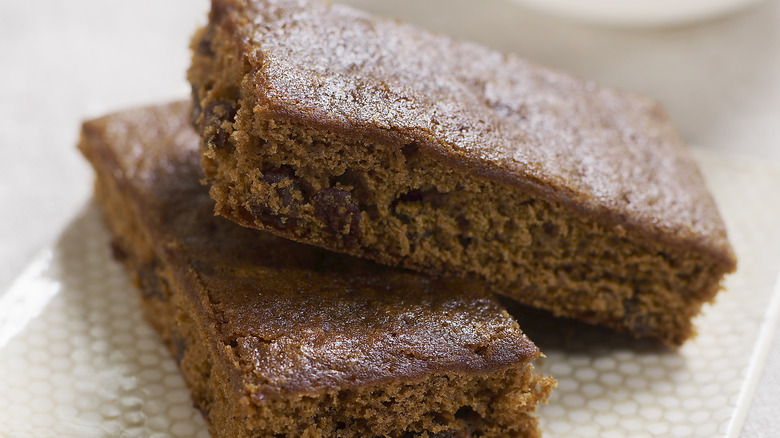Emily Dickinson's Favorite Bread To Bake Remains A Holiday Classic
Although Emily Dickinson's poetry wasn't appreciated until after her death in 1886, her baking skills were much appreciated during her life. She was an excellent baker, winning second place in a contest with a loaf of Indian and rye bread, sending cakes to her friends, and often sharing food with her community in Amherst, Massachusetts. She even claimed that her father disapproved of any bread that wasn't made by her. Cooking and baking were creative catalysts for Dickinson, as she wrote poems on the backs of recipes and food wrappers while in the kitchen, including, "The things that never can come back, are several." And while this 19th-century poet once wrote, "Fame is a fickle food," her view of notoriety was unlike her thoughts about her favorite bread, which remained unwavering.
It wasn't her Indian and rye nor Dickinson's famous black cake that was her most cherished recipe, but her gingerbread. She became known in her town for making these spiced, sweet loaves and would even lower a basket containing the gingerbread from a window to neighborhood children waiting below. According to the Emily Dickinson Museum, in a letter to a friend in which Dickinson shared the recipe, she wrote, "I am pleased the gingerbread triumphed."
Emily Dickinson's gingerbread recipe
There's nothing like a rich, spiced treat to warm you up around the holidays, especially in the dead of a New England winter like the ones Emily Dickinson experienced in Massachusetts. Christmas gingerbread houses are always a festive option, although the bread tends to have a harder texture for the structure of the house, and they make for such cute decorations that eating them seems wrong. You can also opt for a gingerbread cookie with a surprising ingredient, such as black pepper, but sometimes sticking to a simple, old-fashioned recipe is the way to go.
For an even softer ginger treat, the recipe is available in "Emily Dickinson: Profile of the Poet as Cook," a recipe book transcribed from Dickinson's letters and other papers. The book contains her gingerbread recipe, so it can be enjoyed today by poetry and baked-good lovers alike. Her recipe was made of a stiff dough with flour, ginger, salt, butter, cream, soda, and molasses, then baked into a loaf in whichever pan was available. So, next time you have a hankering for a historical holiday bread or have the urge to bake something for your friends or neighbors, give Dickinson's gingerbread a try — it tastes as good as her poetry sounds.

